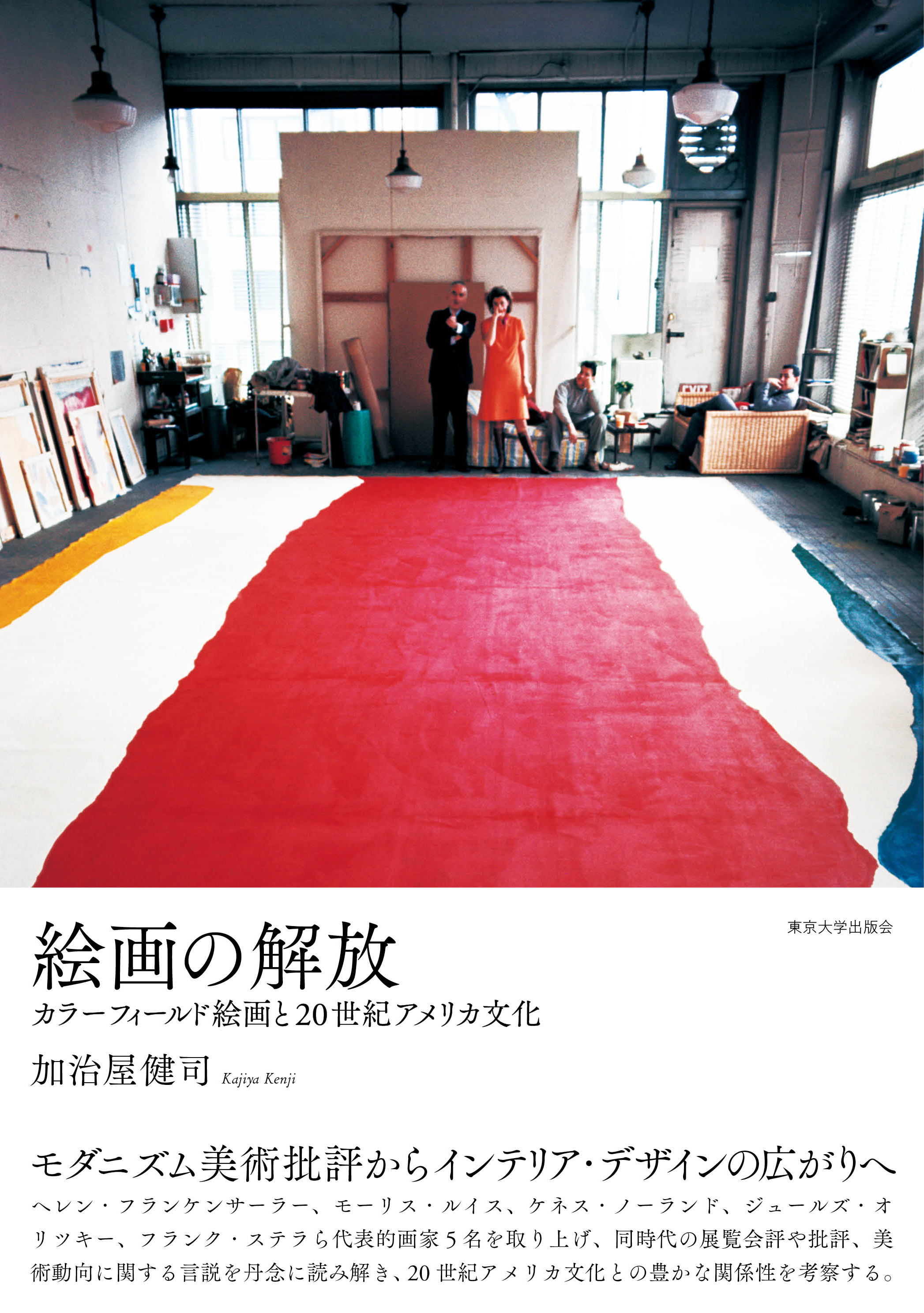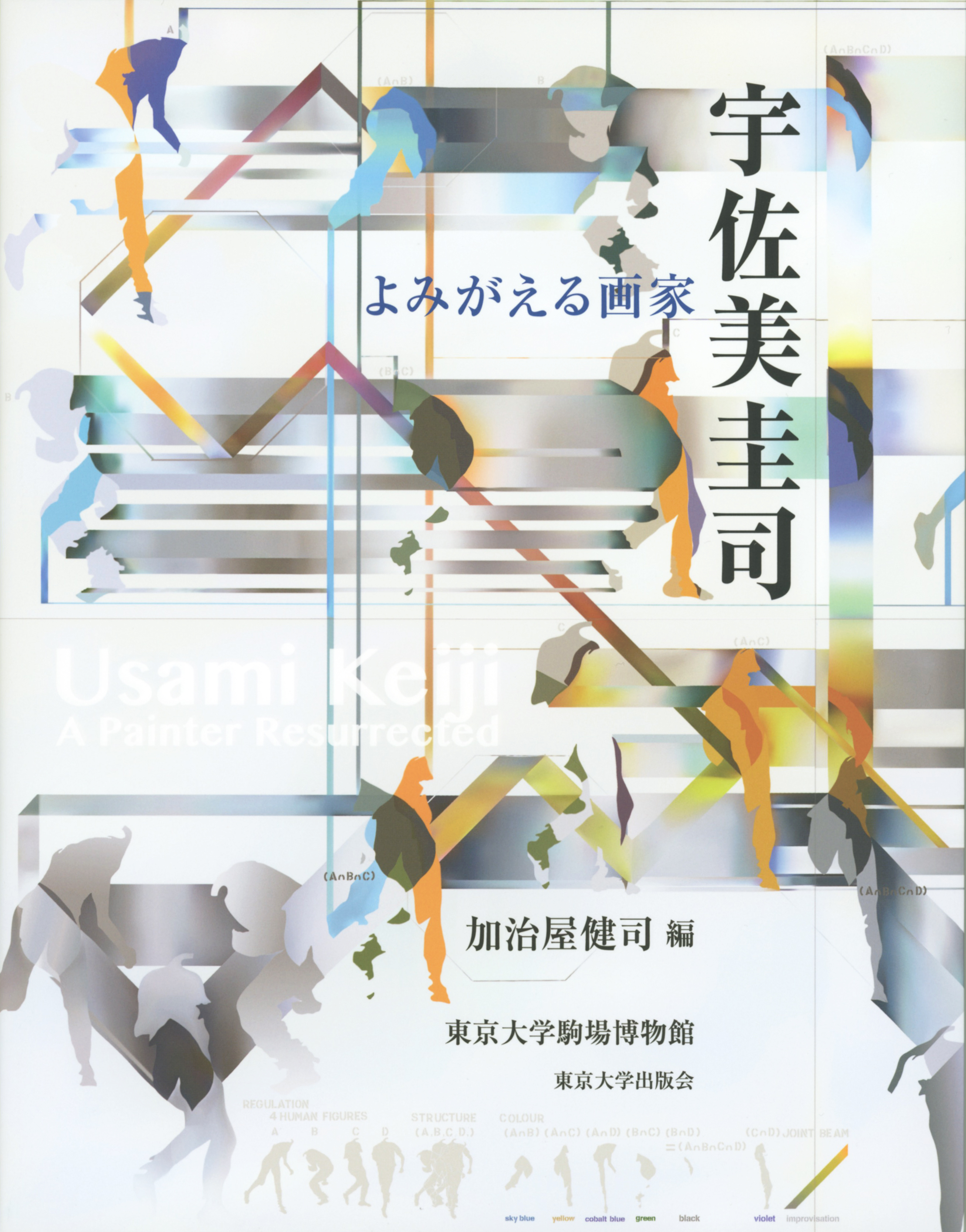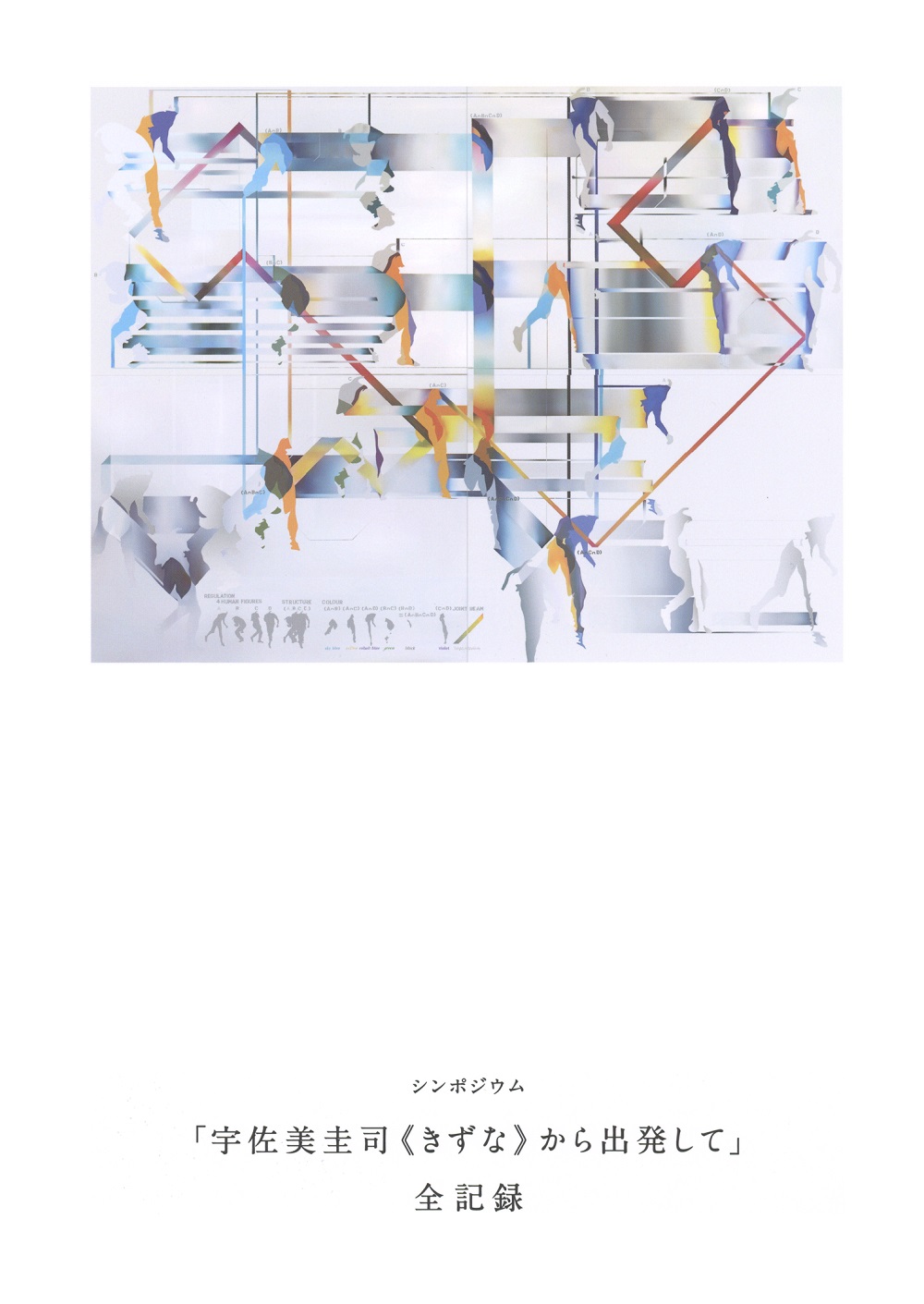
Title
Kaiga no kaihō (Emancipated Painting - Color Field Painting and 20th-Century American Culture)
Size
368 pages, A5 format
Language
Japanese
Released
September 29, 2023
ISBN
978-4-13-016047-6
Published by
University of Tokyo Press
Book Info
See Book Availability at Library
Japanese Page
This book is a study of Color Field painting, a style that flourished in the United States in the mid-20th century. Focusing on five painters (Helen Frankenthaler, Morris Louis, Kenneth Noland, Jules Olitski, and Frank Stella), it explores how Color Field painting negotiated modernist art criticism, other artistic movements, and contemporary culture.
In Chapter 1, I examine the relationship between Color Field painters and modernist art critics. These painters were supported by Clement Greenberg, Michael Fried, and other modernist critics and have often been regarded as embodying the ideals of modernism. In this chapter, I challenge the notion of modernism as monolithic, noting the diverse nature of the relationships both between the Color Field painters and their critics, and among the critics themselves. Through their varied relationships with critics, Color Field painters actively contributed to the formation of modernist art criticism.
In Chapter 2, I explore the interpretations—largely unknown until now—of Color Field painting by non-modernist critics. I argue that Color Field painting was actively discussed by critics outside the modernist movement and that it was linked to a variety of effects and characteristics, such as associative effects and dazzling visuality, which were incompatible with modernist aesthetics.
In Chapter 3, I examine the relationship between Color Field painting and other contemporary art movements, such as Pop Art, Op Art, and Minimal Art. I discuss Color Field painting’s shared interest in non-composition, wholeness, seriality, physicality, and process with these art movements, which are often considered oppositional.
In Chapter 4, I analyze Color Field painting from a cultural viewpoint, including its association with commodities and mechanical reproduction, as well as its use in the interior design of private homes. I compare the viewing experience of Color Field painting to that of widescreen cinema in terms of its enveloping effect on the viewer. I argue that because of its simple colors and designs, Color Field painting incited designers to imitate these works in products that transcended the realm of art in the 1970s.
This book reveals the diversity and richness of Color Field painting, which has heretofore been discussed primarily in relation to modernist art criticism. It posits that Color Field painting liberated the medium from conventional perceptions and presented the possibility of painting as a medium for negotiation with diverse cultures, situating Color Field painting within 20th-century American culture.
(Written by KAJIYA Kenji, Professor, Graduate School of Arts and Sciences / 2024)



 Find a book
Find a book



